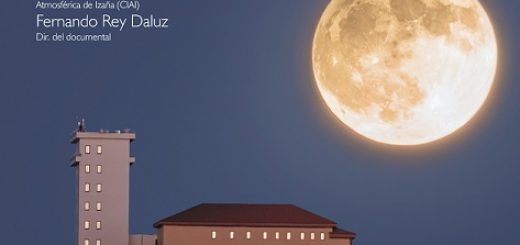Seminar Abstract: The new sun-sky-lunar Cimel CE318-T multiband photometer. A comprehensive performance evaluation.
Since 2014, the aerosol monitoring using passive remote sensing techniques at nighttime period has been focused primarily on the stellar photometry. This is a technique able to infer aerosol optical depth (AOD) with high accuracy but with important operational handicaps, making difficult its implementation in global-scale measurement networks, such as the NASA-AERONET (AErosol RObotic NETwork) network. It is precisely in 2014 when the moon photometry becomes a useful tool to extend aerosol and water vapor information in the current databases as a result of the new lunar photometer prototype (CE318-U) in addition to the new methodology developed to calibrate and obtain these two atmospheric components at night.
With this new information we can monitor the aerosol transport, validate climate models and satellite products at nighttime, as well as to increase the notably low temporal resolution of aerosol databases in case of high latitude locations, given the extended periods of darkness during winter. They could also be of considerable importance to study the effect of aerosols on nocturnal cloud lifetime and coverage as well as to detect aerosol outbreaks at night.
The theoretical bases of the moon photometry and the new advances to solve the main handicaps affecting this technique will be presented in this talk. These handicaps are basically related to the problems to capture the low energy coming from the Moon and the calibration under these variable illumination conditions and such complex illumination pattern as a result of the lunar surface composition and its geometry of illumination. The new sun-sky-moon CE318-T photometer will be also presented, which is able to perform three types of measurements: direct sun and moon, and radiance sky measurements at daytime. These new instruments, called “Cimel triples” due to their triple functionality, allow us to include nocturnal aerosol and water vapor information in the current databases.
This presentation includes a preliminary evaluation of the instrument performance at daytime at Izaña including reference instruments as the AERONET master, the PFR (Precision Filter Radiometer) or the PSR (Precision SpectroRadiometer) prototype; a nighttime evaluation using information from a stellar photometer performed in Granada; and, finally, an AOD day/night transition coherence test at Izaña using AERONET data. The next part of the presentation deals with the evaluation of the precipitable water vapor performed at Izaña and Granada stations using information from GNSS (Global Navigation Satellite System) as reference. Finally, two cases studies will be presented to show the ability of this new device to capture the diurnal cycle of aerosols and water vapor due to short-term atmospheric variations.
These results were presented in the Lunar Photometry Workshop hold in Valladolid last June, 2015, focused on the reduction of the current “gaps” in the annual cycle of AOD in Polar Regions.







